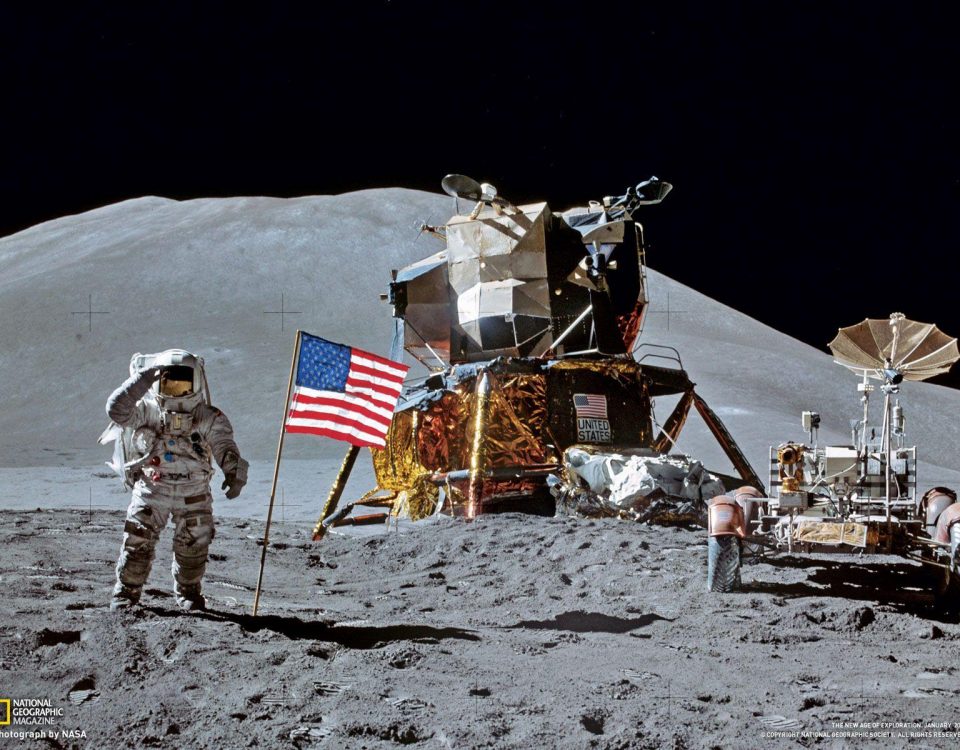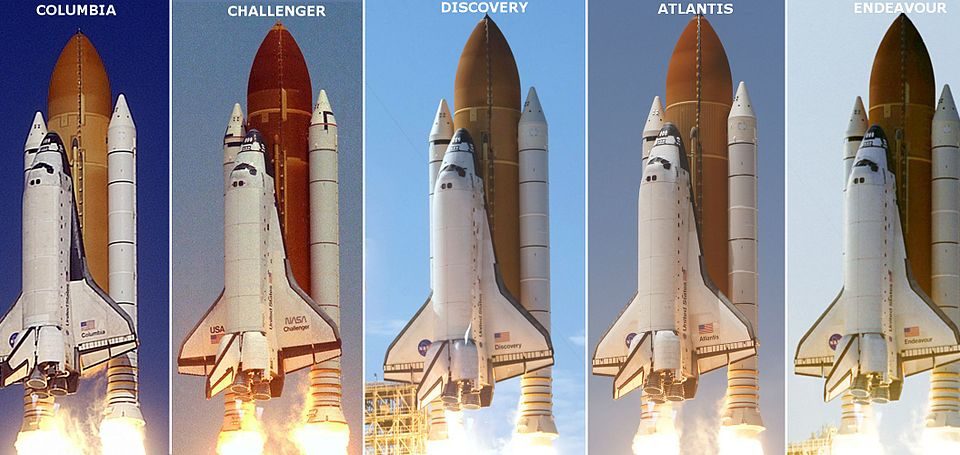
The Space Shuttle Program (NASA: 1977-2011)
May 6, 2024
E35.5 – 2024 / Season 4 Updates and Announcements (Podcast)
June 17, 2024At the height of the Cold War, the Soviet Union launched “Sputnik” – the first satellite into orbit, in 1957, sparking the Space Race between the United States and Russia (read more in my book: “Epic Fails – The Race to Space: Countdown to Liftoff”!) – where each country attempted to outdo the other in a series of impressive aerospace feats. While NASA has typically focused its efforts primarily on Mars (with a series of Mars Rovers from 1997’s “Sojourner” to 2021’s “Perseverance”), the Russian Space Program on the other hand has a long history of *attempting to* explore Venus!
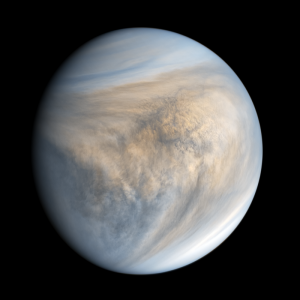
Venus – the second planet from the sun, is named after the Roman Goddess of Love (the Roman version of Aphrodite in Greek Mythology). It’s one of the few planets we can see with the naked eye, the third brightest celestial object in the night sky, and (like the rest of the inner planets in our solar system) is a terrestrial planet. The Ancient Sumerians of the Old Babylonian period referred to it as “Ninsi’anna” which translates to “divine lady, illumination of heaven”.
In 1698, Christiaan Huygens was the first to hypothesize that Venus had an atmosphere, later proven by Russian polymath Mikhail Lomonosov in 1761, and German astronomer Johann Schröter in 1790. Unfortunately, due to the thick cloud coverage over its entire surface, even with the best telescopes, 20th Century scientists couldn’t learn much about the surface of this mysterious planet from observation alone.
Around the same time that Russian cosmonaut Yuri Gagarin became the first man in space aboard Vostok-1, in 1961, the USSR set its sights on sending a probe to learn more about this enigmatic planet. Thus, the Venera Project was born! The Soviets would spend the next couple of decades attempting to unlock the secrets of Venus through a whole lot of trial and error… sometimes more error than trial – as the entire program would soon prove to be a perfect encapsulation of “Murphy’s Law” in action: anything that can go wrong, will…

VENERA 1VA / Sputnik 7 (1961)
The first attempted Venera probe failed to leave orbit when its upper stage misfired. In order to cover for the failure, the Soviets redubbed it to the public as a “Heavy Satellite”, known to the Americans as “Sputnik 7”. (The first of many failed launches that was redubbed in an effort to cover up what might be considered bad PR.)
VENERA 1 (1961)
Venera 1 was intended to do a flyby of Venus. Launched in 1961, the probe’s telemetry failed just seven days after launch…
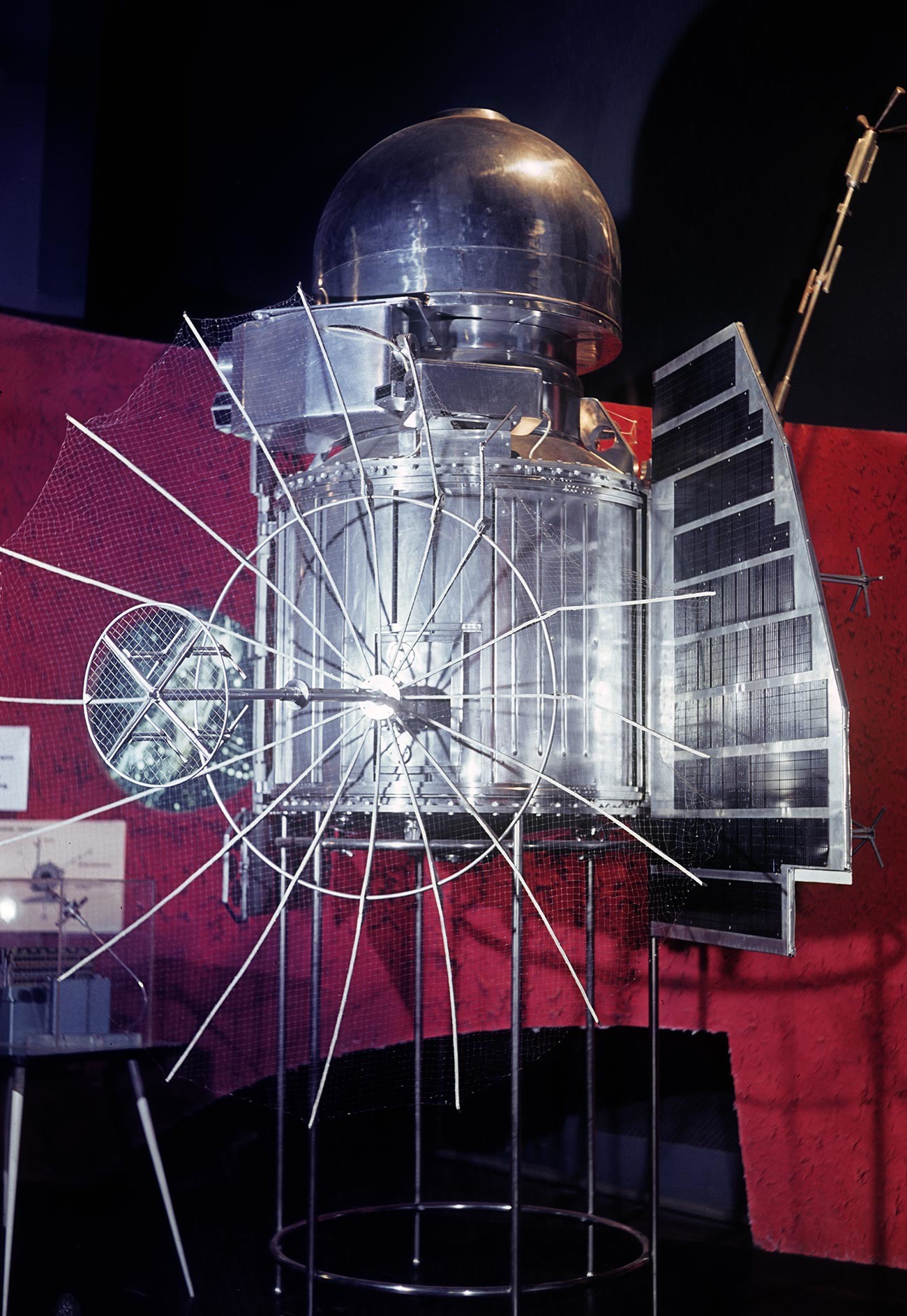
And yes, it really needed to look like a prop from “Lost in Space”
VENERA 2 (1965)
The second Venera probe (3MV-4 No.4) was also intended to attempt a flyby of Venus, it too suffered telemetry failure shortly after leaving Earth’s orbit. It was later determined to have overheated from a radiator malfunction.
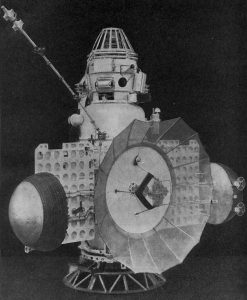
“Exterminate!”
VENERA 3 (1965-1966)
The third probe nearly missed its target by 37,624 miles before a course correction. Venera 3 became the first man-made object to make impact on another planet when the probe crash landed to the Venusian surface in 1966.
Kosmos 96 (1965)
Another probe *intended* for Venus, “Kosmos 96”, failed to leave Earth’s orbit – before crashing back to Earth near Kecksburg, Pennsylvania, and instantly triggering speculation of a crashed UFO!
VENERA 4 (1967)

“These aren’t the Droids you’re looking for…”
Venera 4 (4V-1 No.310) became the first spacecraft to successfully measure the atmosphere of another planet. It was equipped with a lander, a parachute, an ion detector, a magnetometer, and an ultraviolet spectrometer designed to detect oxygen and hydrogen gases in the atmosphere. The probe went dark before it reached the surface, but it managed to detect high levels of CO2.
In 1969, NASA’s Mariner 5 probe did a flyby and detected that Venus’s surface pressure was somewhere between 75 and 100 times the atmospheric pressure as Earth!
Kosmos 167 (1967)
Another failed Venus probe – 8 days after its Escape stage failed, it burned up on reentry.
VENERA 5 + 6 (1969)
Now realizing that the last couple probes were crushed instantly by the dense atmosphere, the Russians decided to beef up the next two. Venera’s 5 and 6 managed to record over 50 minutes of data each, during their slow descent into the atmosphere, prior to their batteries failing.

VENERA 7 (1970)
Venera 7 was the first one specifically designed to survive the harsh conditions of Venus’s surface. This massive hulking chunk of metal became the first probe to transmit data to Earth from the surface of Venus in 1970. Unfortunately, the probe’s parachute failed during its landing, while the planet’s hurricane-force winds (225 mph!) caused the chunky probe to topple over, damaging the antenna! The poor robot survived for 23 minutes – long enough to send back data confirming that the planet’s pressure was about 90 atmospheres, and that the surface temperature was a scorching 869 degrees Fahrenheit!

Kosmos 359 (1970)
Another escape stage failure trapped this probe in an elliptical orbit above Earth…

VENERA 8 (1972)
Yet another hefty robotic space probe sent to Venus: Venera 8! This one was equipped with radio transmitters, a gas analyzer, gamma ray spectrometers, an altimeter, and a refrigeration system designed to prolong the probe’s life long enough to transmit more data back to Earth. This one lasted a whopping 50 minutes and 11 seconds on the harsh and unforgiving surface of the hellish planet!

Venera 8 also was the first to detect trace amounts of ammonia in the planet’s atmosphere, so that’s cool I guess?
Kosmos 482 (1972)
During this probe’s “Trans-Venus injection”, the Escape Stage rocket didn’t just fail – it exploded!
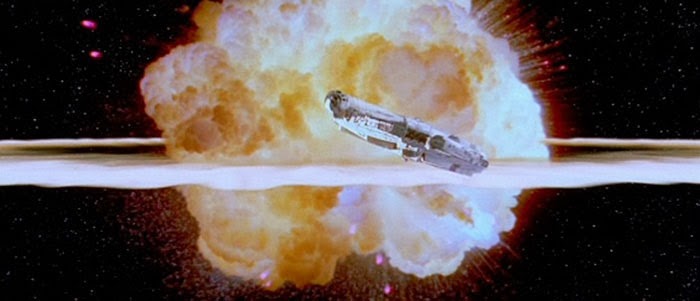
The catastrophic rupture, tore the hefty probe into four chunks, sending some debris raining down on unsuspecting civilians in New Zealand in 1978. The main part of the Venus lander is *still* in orbit (as I’m typing this), and is expected to hurtle towards Earth sometimes between… now and 2025!?
Considering the later Venera probes were designed to withstand much harsher conditions than our own planet, scientists are fairly certain that it will stay intact during reentry! So you know, watch out for random falling Soviet space junk!

VENERA 9 to 12 (1975-1978)
The next four Venera probes weighed 5 tons of each! Venera’s 9 through 12 were launched towards Venus by Russia’s powerful Proton boosters. All four of these highly advanced probes were decked out with some of the heaviest armament and contingencies to ensure the survival of the technical instruments onboard. On top of all that, this time, the probes were sent with specialized cameras to take the first photographs of the surface of Venus, to transmit back to Earth!
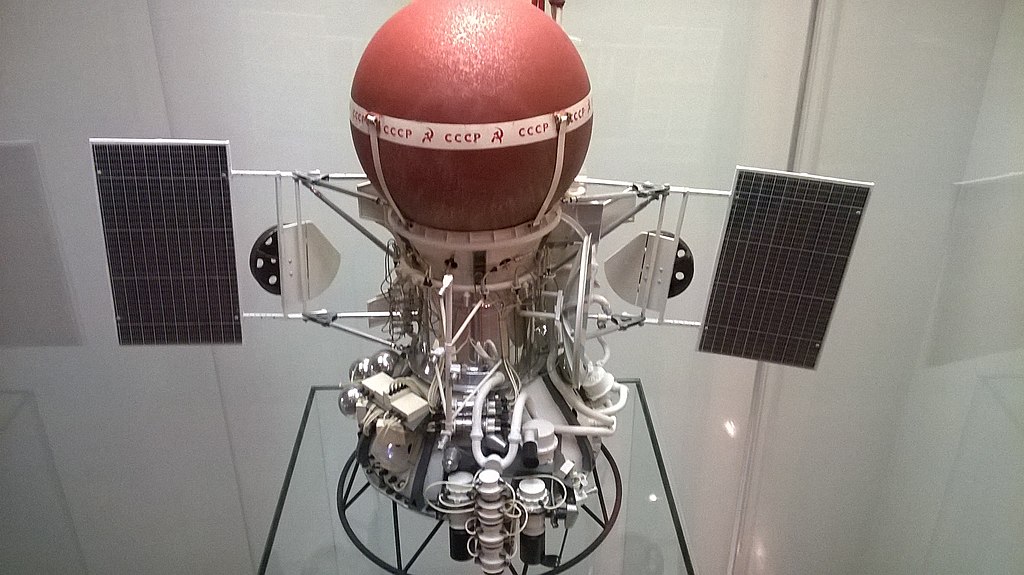
Unfortunately, despite all the thorough preparation, Murphy’s Law struck once again:
- Venera 9 operated for 53 minutes. One of its camera lens caps failed to release.
- Venera 10 operated for 65 minutes. One of its camera lens caps failed to release.
- Venera 11 operated for 95 minutes. Both of its camera lens caps failed to release.
- Venera 12 operated for 110 minutes. Both of its camera lens caps failed to release.

Despite the catastrophic failures of each of these probes, Venera 9 and 10 still managed to send back the first images from another planet!
The first image of the surface of Venus was taken by the Venera 9 lander on October 22nd, 1975, and is *still* one of the clearest images of Venus to date!

Around the same time, in 1978, NASA’s Pioneer 1 orbiter helped to confirm the detection of sulfuric acid rain in the upper atmosphere of Venus, along with the detection of lightning!
VENERA 13 + 14 (1981-1983)
Venera 13 and 14 were identical, constructed to take advantage of the 1981 Venus launch window – as it was closest to Earth. This time, the probes were equipped with all the previous instrumentation, along with even more fail safes, a drill to sample the soil, Ultraviolet Photometers, X-Ray Fluorescence Spectrometers, *and* onboard microphones!
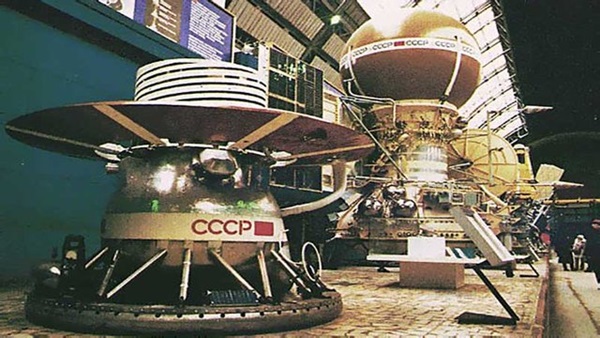
Lucky Number 13 returned the first audio recording from another planet! (mostly the sounds of wind and the probe’s drill) Venera 14 however once again ran into some issues. After a four month long journey to Venus, everything went according to plan: the descent vehicle separated, plunged into the atmosphere, the parachute deployed as expected, and the clunky craft landed safely – that is until the probe went to sample the soil.
This time, the lens cap on the quartz camera actually popped off as intended. Unfortunately, the lens cap just so happened to land right where the probe was designed to test the soil, because of course it did. So yeah, all that just to analyze the compressibility of the Venera 14’s lens cap… Awesome.

“Lens Caaaaaaaaap!!!” (echoes into space for eternity)
VENERA 15 + 16 (1983-1984)
Venera’s 15 and 16 (aka 4V-2) were both launched for Venus in 1983. Unlike most of the previous probes, these two were not designed with landers in mind, instead they were equipped with high-resolution radar imaging systems to penetrate the planet’s dense clouds and map the surface of Venus!
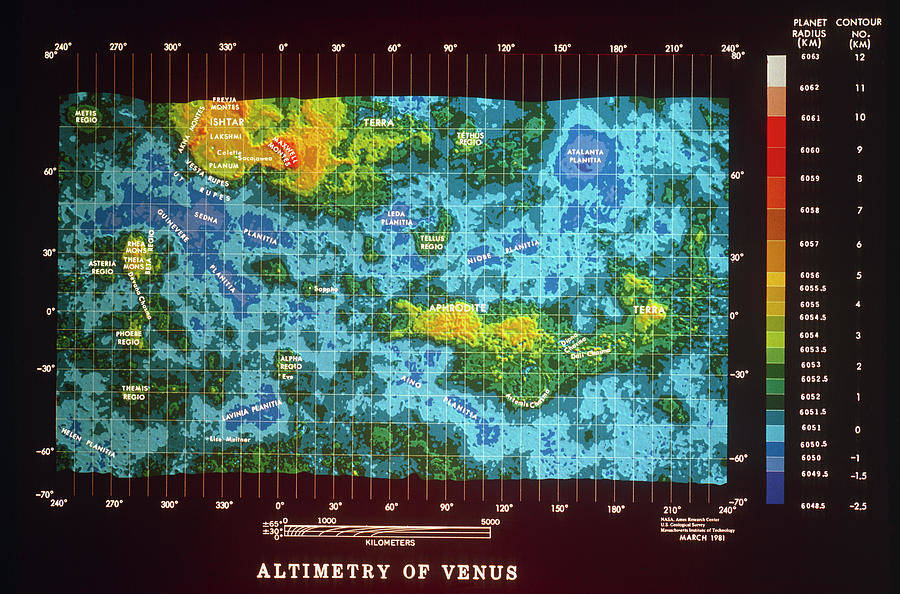
These two probes were an Epic Win for science!
VEGA 1 + 2 (1984-1985)
The Russian VeGa probes had the same general design as the earlier Venera projects, but were diverted to investigate Halley’s Comet after dropping their payload off on Venus!
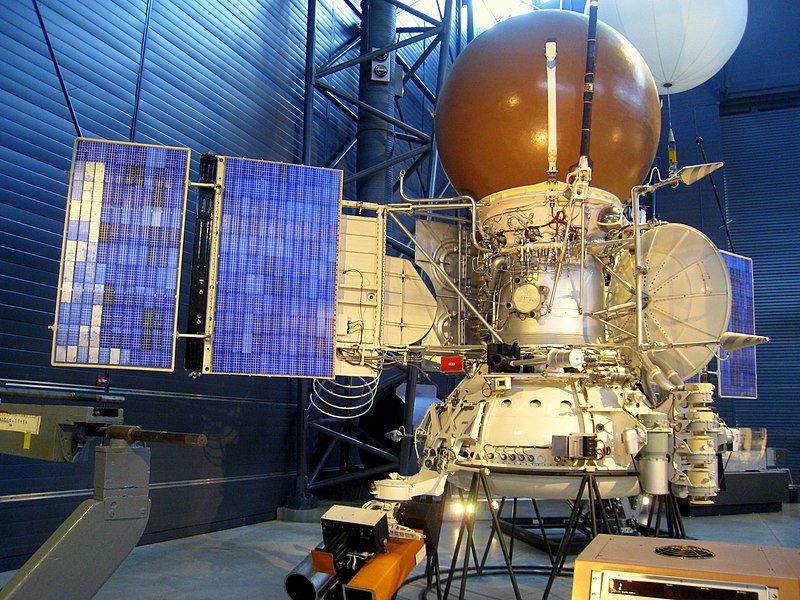
Vega 1’s lander was hit by a hard jolt of wind 12 miles up, inadvertently triggering its surface experiments, thus failing to provide any useful information. Meanwhile, Vega 2 managed to touch down and provided 56 minutes of data – all of which reinforced just how deadly and unforgiving Venus’s environment continues to be.
VENERA-D (2029?)
In the time since the original Soviet-era Venera missions, NASA’s Magellan spacecraft (first deployed by the Space Shuttle Atlantis in 1989) detected volcanic activity on the surface of Venus. It’s believed that Venus was once much more like Earth, but suffered a catastrophic “Runaway Greenhouse Effect” causing the climate to become inhospitable to life (or Russian robots). Venus lacks a magnetic field, like Earth, so solar winds regularly strip water vapor from the planet!

Russian scientists have since proposed a new mission to Venus: the appropriately named “Venera-D” – with the best potential launch windows in 2026 and 2031. It’s planned to incorporate NASA components, atmospheric weather balloons, an orbital satellite to measure plasma, and an ambitious lander with a 24-hour lifespan to (hopefully) stream video back to Earth from the surface of Venus! In March of 2021, it was stated that they were aiming for no earlier than November 2029…
If there’s one thing we can all learn from the Venera Project, it’s the power of perseverance in the face of adversity: if at first you don’t succeed – try, try again!
– Erik Slader
Be sure to check out the Epik Fails of History podcast, as well as 10 Accidental Inventions and Discoveries (Part 1 of 2), 20 of the Worst Aircraft Designs of All Time?, Voskhod-2, and my books: “The Wright Brothers: Nose-Diving Into History” and “The Race to Space: Countdown to Liftoff”!



